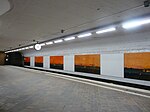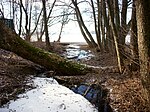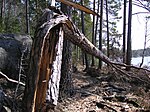Skärholmen
Districts of StockholmMillion ProgrammeRailway stations opened in 1967Stockholm County geography stubs

Skärholmen is a suburban area in the district of Söderort in south-western Stockholm, Sweden. Together with Bredäng, Sätra and Vårberg, it forms the borough of Skärholmen. The community primarily consisting of Million Programme style apartment buildings from the 1960s and early 1970s. It is one of the larger and more well known suburbs of Stockholm. Skärholmen Centrum (also known as SKHLM), one of the biggest shopping centres in Sweden is situated in Skärholmen.
Excerpt from the Wikipedia article Skärholmen (License: CC BY-SA 3.0, Authors, Images).Skärholmen
Äspholmsvägen, Stockholm Skärholmen (Skärholmens stadsdelsområde)
Geographical coordinates (GPS) Address Nearby Places Show on map
Geographical coordinates (GPS)
| Latitude | Longitude |
|---|---|
| N 59.277108333333 ° | E 17.906986111111 ° |
Address
Äspholmsvägen
Äspholmsvägen
127 48 Stockholm, Skärholmen (Skärholmens stadsdelsområde)
Sweden
Open on Google Maps











